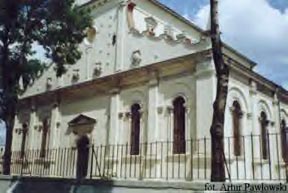

The Dorengowski Family
FREQUENCY OF THE NAME DORENGOWSKI:
The Dorengowski Coat of Arms is based on the Cornucopia which symbolizes abundance. The mythology of this symbol is from Greek Mythology. Zeus (Jupiter) was committed by his mother, Rhea, to care for the daughters of Melisseus, king of Crete. The child was fed goat's milk, and one day Zeus broke off one of the goat's horns and cast a spell so that the horn should never be empty. Thus insuring the child's continued health and sustanance. The cornucopia had the wonderful power of being filled with whatever its possessor might want, or wish for. The nymphs nursed Zeus as a child, in lergend. Another legend tells that Zeus gave the goat horns to the nymphs.
In reference to the Dorengowski arms it refers to the saying: "From war, comes peace." The goat, Amaltheia's horns gave ambrosia and nectars, "the food and drink of the gods." The horn of plenty was a symbol of inexhaustable riches and noble trappings. Praise was given for the virtuous acts of nobility, which should be shown towards all manner of men. One can witness the water upon a bridge, after a storm, that aways settles back into the river and restores the peaceful tranquility of the scene after the storm has passed, as well as fertilizing the land. This brings forth the idea that the past should remain the past, and that feelings of restoration should exist among all mankind (especially between nobles and peasants). The horn is a token of the trumpeting hunting horn and the bringing of food to the table. "Noblesse Oblige" is the ability to know how to use your authority with a passionate heart, as the river flows gently from one point to another. You must remember that many nobles were ridiculed by non-nobles for their excesses. The Dorengowski family wants others to remember that they strive for compassion.
Aloysius Dorengowski of Tuligow, Poland.
While exploring the net, I found the story of Aloysius Dorengowski:
Aloysius Doregowski was age fifty (50) years. He resided in Tuligow, near Krasnystaw, Poland. Aloysius gave a thorough and morbid account of his great infirmity, that of severe chest pains from ulcers, and pain the area of the liver. Aloysius was under the care of various doctors, from which he got little relief. One of their cures was the use of hydropathy. When none of their "cures" worked, the doctors told him he had only eight(8) days to live. They then gave him a prescription for pain, which they promised would make his last days "comfortable."
His wife planned to visit the Zamoyski pharmacy to get the medicine her husband needed. However, in her trip, Aloysius' wife recalled that the Collegiate Church, in Zamosc, has a Holy Painting of the Mother of Divine Protection. The Virgin Mary was reputed to have cured others here at this Cathedral, so on the way to the pharmacy, she decided to stop there and pray for her husband.
When she returned from Zamosc, Aloysius' wife told him that she not only got his prescription, but that she had prayed for him at the Holy Shrine. Aloysius took his medicine, which dulled his pain, and then he felt this great and overpowering need to go to the Zamosc Cathedral and pray to the Holy Mother, during the evening devotions. He would also take what he thought would be his last confession and communion there (Protokul, s. 2).
Zamosc Cathedral
Not long after this trip, Aloysius Doregowski felt that some higher force must be at work. He felt as if a mracle had occured. Within one week, the ulcers began to break away and he spit up blood. He, at once, felt relieved. Thinking that this must certainly be the work of the Holy Mother, Aloysius returned to the Church again and again. For six (6) weeks he prayed before the Holy Painting. Each day he prayed that the Virgin would heal him. Her grace did fall upon him and he was cured. Since he was cured he continued to honor and praise the glory of the Blessed Virgin.
This event occured on August 10, 1804.
A special thanks to Leonard Suligowski for his assistance in translating this account.
RELATED LINKS:
Zamosc, Poland ... Pope's address at Zamosc (6/12/99) ... Zamosc ... Photos of Zamosc ... Czestochowa and Jasna Gora ... The Virgin Mary
© 1997 E-Mail:Vondoering@aol.com

features two crossed horns.According to Sl~ownik Nazwisk there are only 20 people in Poland with this name:
Facts About Zamosc:

visitor since November 14, 2003

Last updated on April 27, 2007
